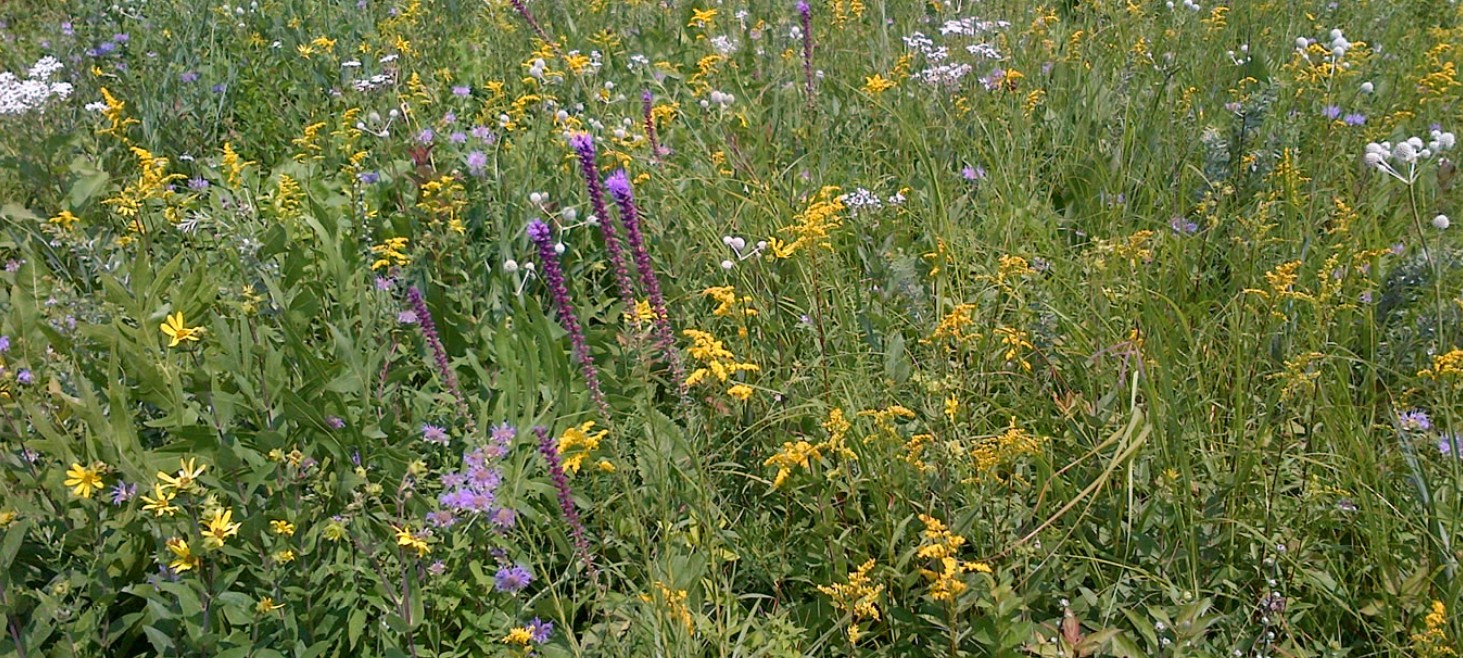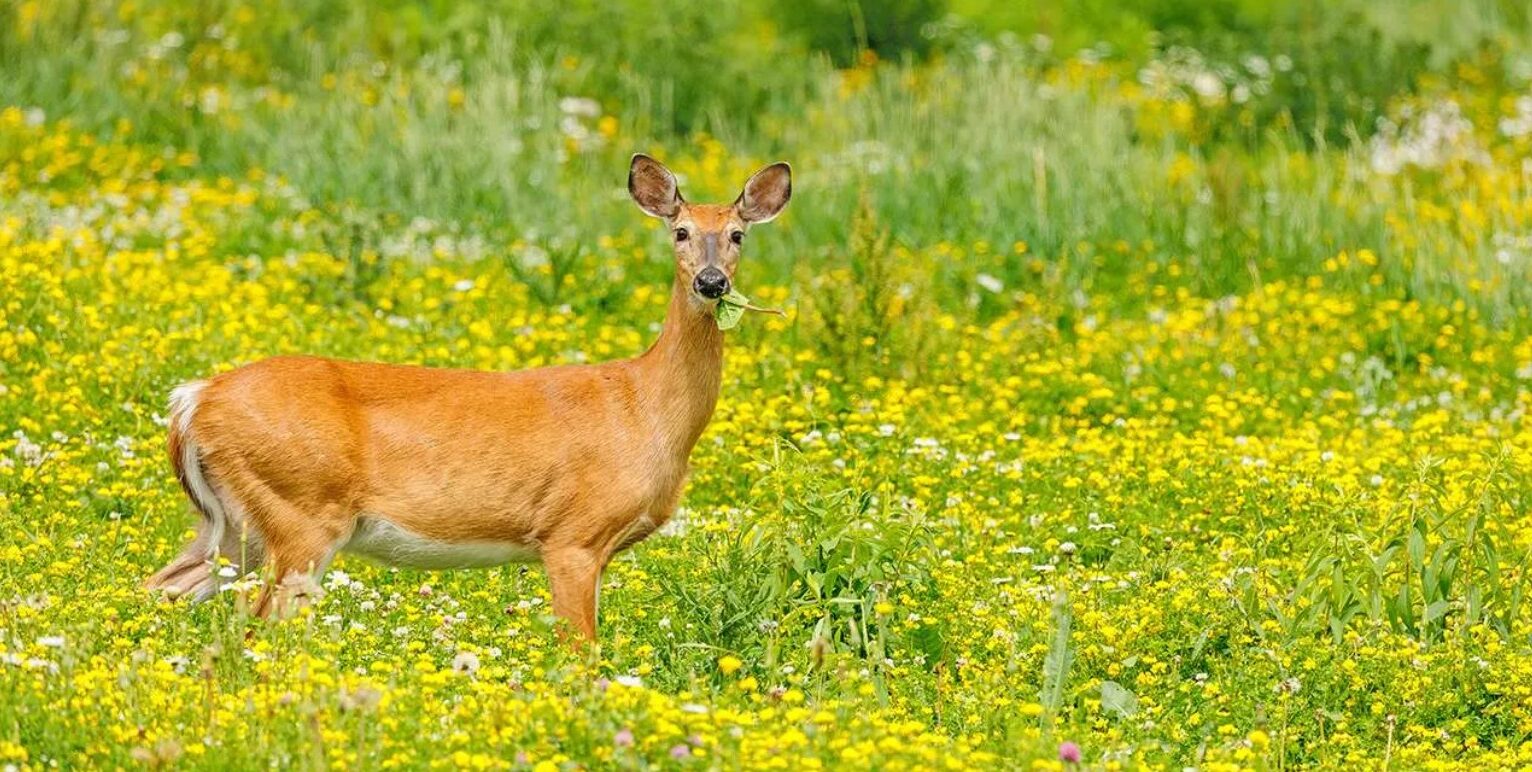Mowing to Improve Deer Habitat
Mowing is a valuable tool in wildlife habitat management when used strategically to maintain and enhance early successional habitats. In fact, mowing to improve deer habitat may be one of the easiest practices available to hunters and wildlife managers. By mowing old fields, overgrown food plots, or grassy areas at the right time, land managers can improve plant diversity and wildlife habitat. In addition, periodic mowing for deer habitat management prevents the establishment of invasive woody plants in open fields.
The timing and frequency of mowing are essential to avoid disrupting nesting birds and young mammals, especially deer fawns. Timing is also important for maximizing the nutritional value and structure of regrown vegetation. Mowing is a simple practice, but the details are important! Today, let’s look at some of the most important aspects of mowing to improve deer habitat and herd health.

Understanding Early Successional Habitat
White-tailed deer rely heavily on early successional habitat. These are areas where forbs dominate the landscape, although there may also be some grasses and young woody plants. These habitats provide abundant food in the form of native browse and forbs, as well as cover for fawning and bedding.
Without management, however, these fields gradually convert to less productive mid- and late-successional stages. Fields become dominated by old, rank grasses and encroaching woody plants. Mowing helps reset the successional clock, encouraging regrowth of high-value forage plants. This keeps the habitat favorable for deer in terms of both food and structure.
Mowing to Improve Deer Habitat: Grow Forbs!
Ok, so what exactly are forbs? Forbs are broad-leaved, herbaceous (non-woody) flowering plants that are neither grasses nor shrubs. They include a wide variety of wildflowers, legumes, and weeds commonly found in open fields, forest openings, and early successional habitats. Forbs are critically important to white-tailed deer because they are highly nutritious, particularly rich in protein, vitamins, and minerals. These are all nutrients essential for antler development in bucks, milk production in does, and overall body condition in all age classes.

Deer selectively browse forbs throughout the year, when they are available. Promoting diverse and abundant forb growth through habitat management practices like mowing, prescribed fire, or light disking can significantly enhance forage availability. Abundant food sources on a property helps support a healthy, productive deer herd.
Timing is Critical for Deer Habitat Management
One of the most important considerations when mowing for wildlife, especially white-tailed deer, is timing. Mowing during the wrong season can disrupt critical life stages of both whitetail and other wildlife. The goal of most deer habitat practices is to improve the quantity and quality of desirable native plants, not harm them.
For deer, fawning season typically occurs from late spring through mid-summer, depending on the region. During this time, does seek habitat comprised of dense grass and forb cover to hide their newborn fawns. Generally, they will remain bedded for most of the day. Mowing during this period can inadvertently kill fawns. Removing taller structure may also leave them vulnerable to predators by removing concealment cover. In addition, mowing too late in the spring and too early in the summer does not benefit plants preferred by whitetail.
To minimize negative impacts to deer and their habitat, late summer to early fall is often the best time to mow. By this point, most fawns are mobile and capable of escaping equipment. Furthermore, mowing to improve deer habitat during this period can stimulate the regrowth of nutrient-rich plants that benefit deer going into the fall and winter months. With old, rank vegetation removed, sunlight and fall rains can lead to forb-rich fields for whitetail, turkey and other wildlife.
Mowing Frequency & Rotation
Rather than mowing an entire field each year, a rotational mowing schedule should be considered. Dividing fields into sections and mowing one-third to one-half of the area each year promotes a diversity of plants and habitat structure. This retains some areas to remain undisturbed for deer bedding and fawning, but others areas are reset for improved whitetail forage.
This patchwork approach provides a mix of habitat stages across the landscape. Deer benefit from having access to new growth for feeding and older, unmowed areas for cover. Over time, rotational mowing supports a more stable and resilient plant community that meets the year-round needs of white-tailed deer on a property.
Mowing to Improve Deer Habitat: Patterns?
Land managers can simply mow one-third to one-half of a field, or can choose to insert more complexity. Strip mowing is beneficial pattern, where long, narrow strips are mowed in alternating sequences across a field. This creates a mosaic of vegetation heights and successional stages, allowing deer to easily move between feeding and bedding areas with minimal exposure to predators.
Edge-focused mowing, where mowing begins near forest or brush lines and progresses inward in stages over years, can also enhance “edge habitat,” which deer strongly prefer.
These patterns not only support white-tailed deer but also help a variety of other wildlife by promoting plant diversity and reducing the risk of disturbing fawns or ground-nesting birds. Again, the key is to avoid mowing the entire field at once and to vary mowing patterns over time to maintain habitat complexity.
Consider Mowing Height
Mowing height is a critical factor in wildlife management because it directly affects the structure, quality, and regrowth potential of vegetation in managed habitats. For white-tailed deer and many other species, maintaining a mowing height of 8 to 12 inches is generally recommended. This height protects the root systems of beneficial plants, promotes quicker regrowth of nutritious forbs and grasses, and preserves low-lying cover for fawns, ground-nesting birds, and small mammals.
Mowing too short can damage some desirable vegetation and eliminate essential wildlife cover. Conversely, mowing too high may not sufficiently control woody encroachment or stimulate new plant growth. By adjusting mowing height appropriately, land managers can strike a balance between encouraging high-quality forage and maintaining sufficient cover. In turn, the enhances the habitat’s value for deer and other wildlife.
Wildlife Beyond White-tailed Deer
While the focus of mowing might be white-tailed deer, these practices also affect many other wildlife species. Wild turkeys, bobwhite quail, rabbits, and songbirds all rely on early successional fields for nesting, foraging, and brooding. Mowing with a broader ecological view in mind helps support greater plant and animal diversity, which in turn contributes to a healthier, more balanced area for wildlife.
To reduce impacts on ground-nesting birds, avoid mowing from April through mid-July, which overlaps with most nesting periods. This coincides with the whitetail fawning season. If mowing must occur during this time, consider mowing only the field edges or narrow strips and leaving the bulk of the field undisturbed.
Review: Mowing to Improve Deer Habitat
Managing land for white-tailed deer requires more than simply offering food and cover—it demands thoughtful stewardship of habitat throughout the year. One of the most practical and impactful management tools for landowners is mowing. When timed and implemented correctly, mowing grasslands and old fields can enhance forage quality, maintain critical cover, and promote biodiversity. Mowing is a deer habitat management practice that benefits whitetail, in addition to a wide range of other wildlife species. However, mowing without consideration of ecological timing and habitat needs will do more harm than good.
When mowing grasslands and old fields for the benefit of white-tailed deer, several key considerations help ensure the practice supports rather than harms the habitat. Timing is crucial—mowing should generally be done in late summer or early fall, after the peak fawning season, to avoid disturbing or killing young fawns that use tall vegetation for cover. This timing also promotes regrowth of tender, high-quality forbs and grasses that deer prefer as browse.
Mowing patterns also matter. Instead of mowing the entire area at once, it’s beneficial to use rotational or patch mowing to maintain habitat diversity and ensure continuous availability of both cover and forage. Leaving some areas unmowed provides bedding and escape cover, which is especially important in open landscapes. Mowing height should be adjusted to avoid scalping the ground, which can harm desirable vegetation and soil health.
By mowing with these factors in mind, land managers can significantly enhance the value of grasslands and old fields for white-tailed deer and other wildlife. Mowing to improve deer habitat is not a silver bullet for deer habitat management, but can be part of an integrated approach on just about every property.